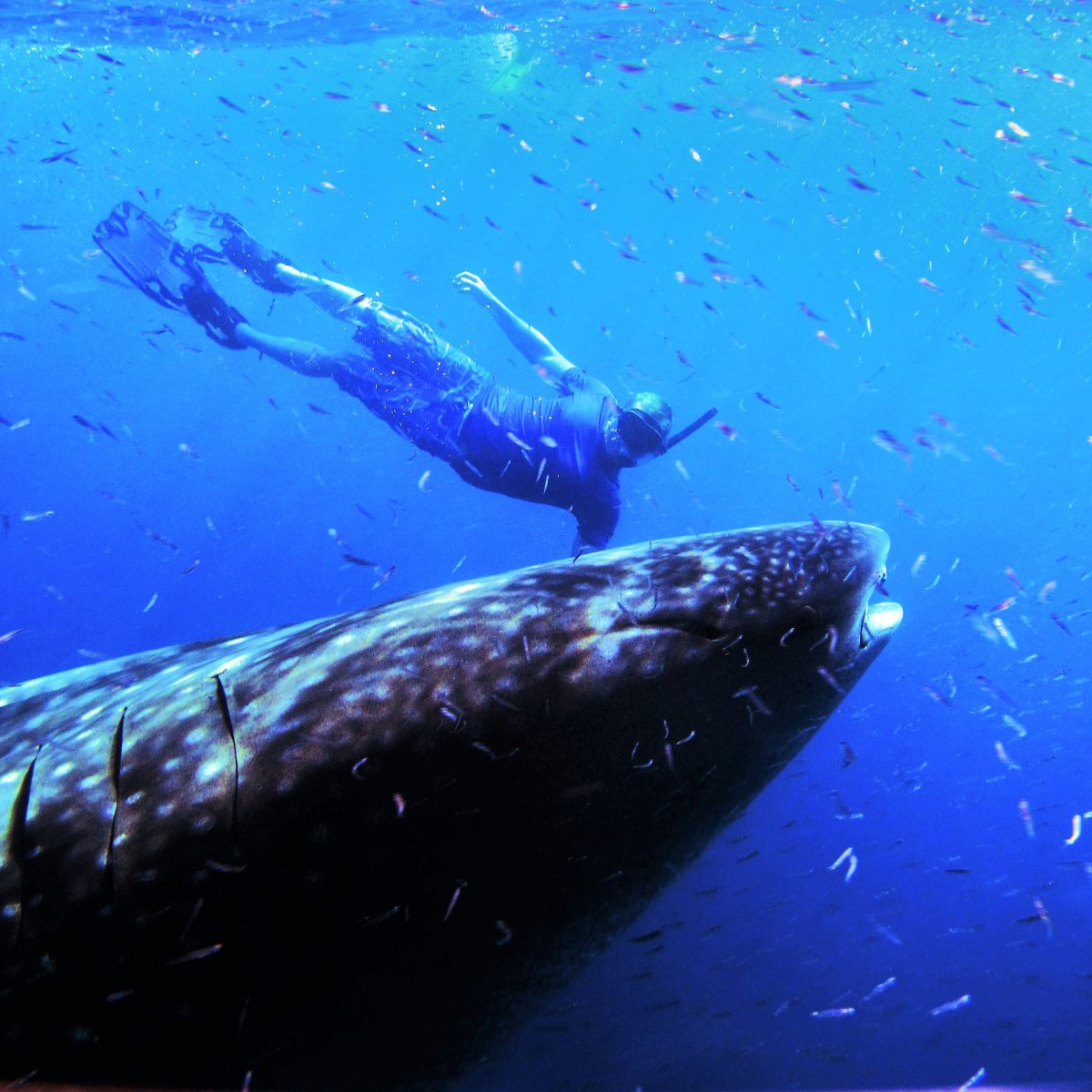The fishermen of Utila have historically known about a huge fish that swam in the water surrounding the island- they called it “Old Tom”, the largest of fish. Today it is well known as the Whale Shark.
Utila is known as the “Whale Shark Capital of the Caribbean” and is a famous location for Whale Shark encounters, year round.
Utila is home to the Whale Shark and Oceanic Research Centre (WSORC), the only research organization that has been granted a research permit to study whale sharks in the country by the Honduran Environmental Department.
The whale shark (Rhincodon typus) is the largest living fish in the sea, and can grow to over 40 feet (12 meters). The most common size seen around Utila is between 5m and 10m (18ft and 32ft), weighing around 15 – 20 tons. Despite its large size, the whale shark eats only plankton and is a filter feeder. Due to its eating habits it poses absolutely no threat to humans. The exact lifespan of a Whale Shark is unknown, but is estimated to be between 70 and 130 years.
One of the reasons that Whale Sharks draw visitors to Utila is that Utila is one of the few places in the world where Whale Sharks frequently pass close to shore and can be seen year round. Though Whale Sharks are usually solitary it is not uncommon for 3 or more singular Whale Sharks to be sighted in the same day along the northern shores of Utila during the “Whale Shark Season”, when the large animals make an annual migration.
Whale Sharks are shy and rather mysterious creatures and are not easy to study. It is still not known for example, where they breed or give birth nor is there a scientific explanation as to why mainly the juvenile of the species have the tendency to congregate in large numbers at certain times of the year (aggregate), and in certain places around the world.
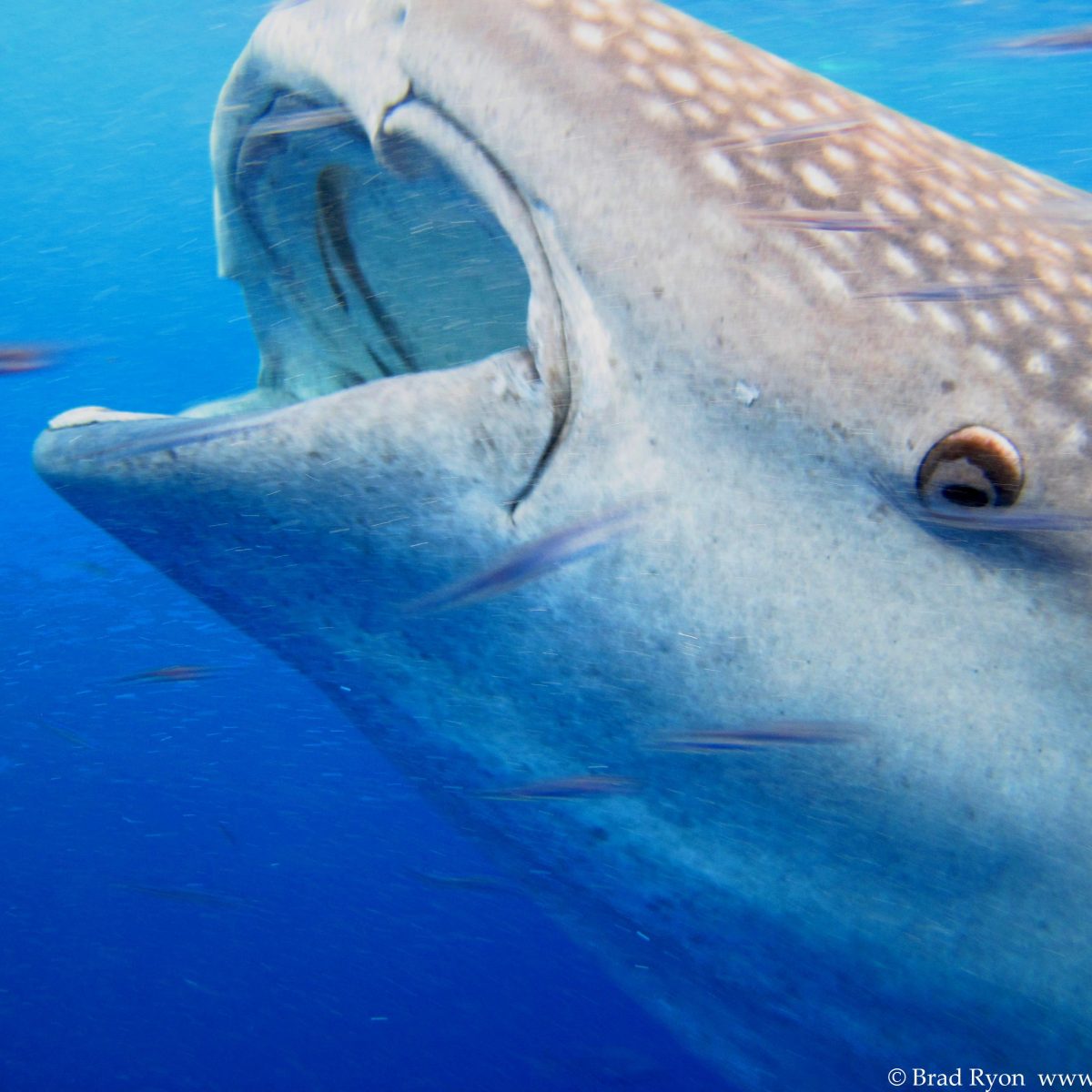
Distribution:
Whale sharks are found in all tropical and warm temperate seas with a range typically between latitudes 30°N and 35°S. They are known to inhabit both deep and shallow coastal waters and the lagoons of coral atolls and reefs, frequently in surface sea-water between 21 and 25°C.
Taxonomy:
The whale shark was first described and named by Andrew Smith in 1828, based on a specimen harpooned in Table Bay, South Africa.
Habitat:
In contrast to most sharks from the same order (Orectolobiformes), which are benthic (live on or near the bottom) species, the whale shark is a pelagic (open sea) species. Studies reveal that this shark prefers warm waters, with surface temperature around 21-30º C, but will come close to shore at times
Reproduction:
The reproductive habits of the whale shark are obscure, and are based on the capture of a female in July 1996 which was pregnant with 300 near term pups which indicated that they are ovoviviparous, the eggs remain in the body and the females give live birth.they are ovoviviparous, the eggs remain in the body and the females give live birth.
On March 7, 2009, researchers in the Philippines discovered what is believed to be the smallest living specimen of the whale shark. Measuring 15 inches (38 centimeters) in length, the young shark was found with its tail tied to a stake at a beach in Pilar, Philippines, and was thereafter freed and released into the wild. The incident also led the researchers to believe they may have pinpointed one of the possible birthing grounds of the whale shark.
It is believed that whale sharks become sexually mature at about 25 years old
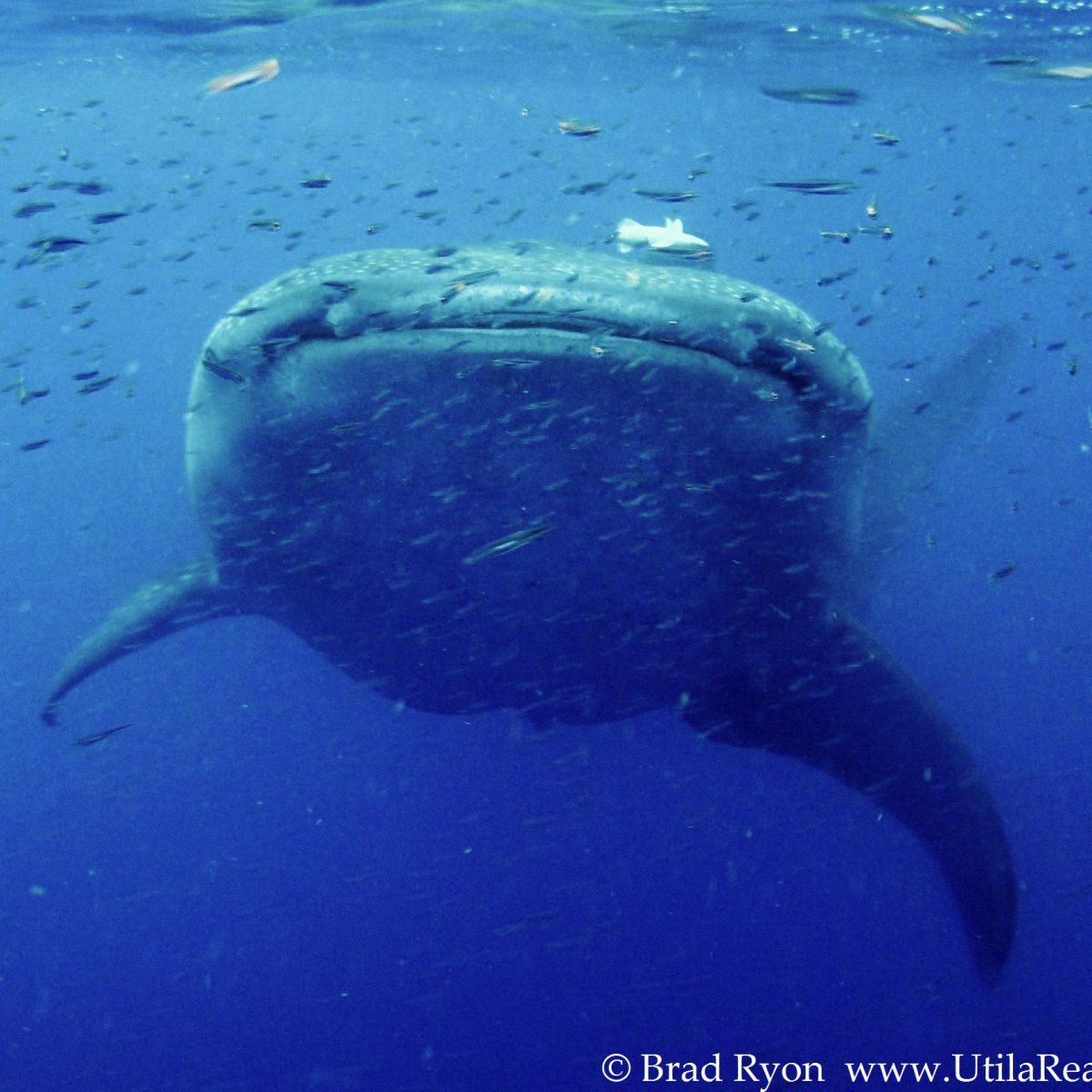
Diet:
The whale shark is a filter feeder which means that it feeds on plankton. Plankton is a broad term which covers a variety of microscopic organisms that float freely with oceanic currents and in other bodies of water. Plankton is made up of tiny plants (called phytoplankton) and tiny animals (called zooplankton).
Conservation and Protection:
The whale shark has been reclassified as ‘endangered’ by the International Union for Conservation of Nature and Natural Resources (IUCN), in July 2016 which shows that the species is moving closer to extinction from its previous “vulnerable” status. They are on the organizations ‘Red List’ which emphasizes the urgency for quick action within the conservation community to act strategically to protect this species.
An assessment has revealed that the “growing human pressures” on these species have put them under great risk of being completely killed off.
The Whale Shark population has been estimated to have decreased by half over the last 75 years.
Despite conservation efforts in various countries, such as the Philippines and India, and regulation of the whale shark trade, they continue to be fished-mostly as by-catch of tuna fishers.
Whale Sharks are slow moving and so also get killed by ship propellers.
Whale Sharks are protected under the CITES agreement (the Convention on International Trade in Endangered Species of Wild Fauna and Flora), and under Honduran law.
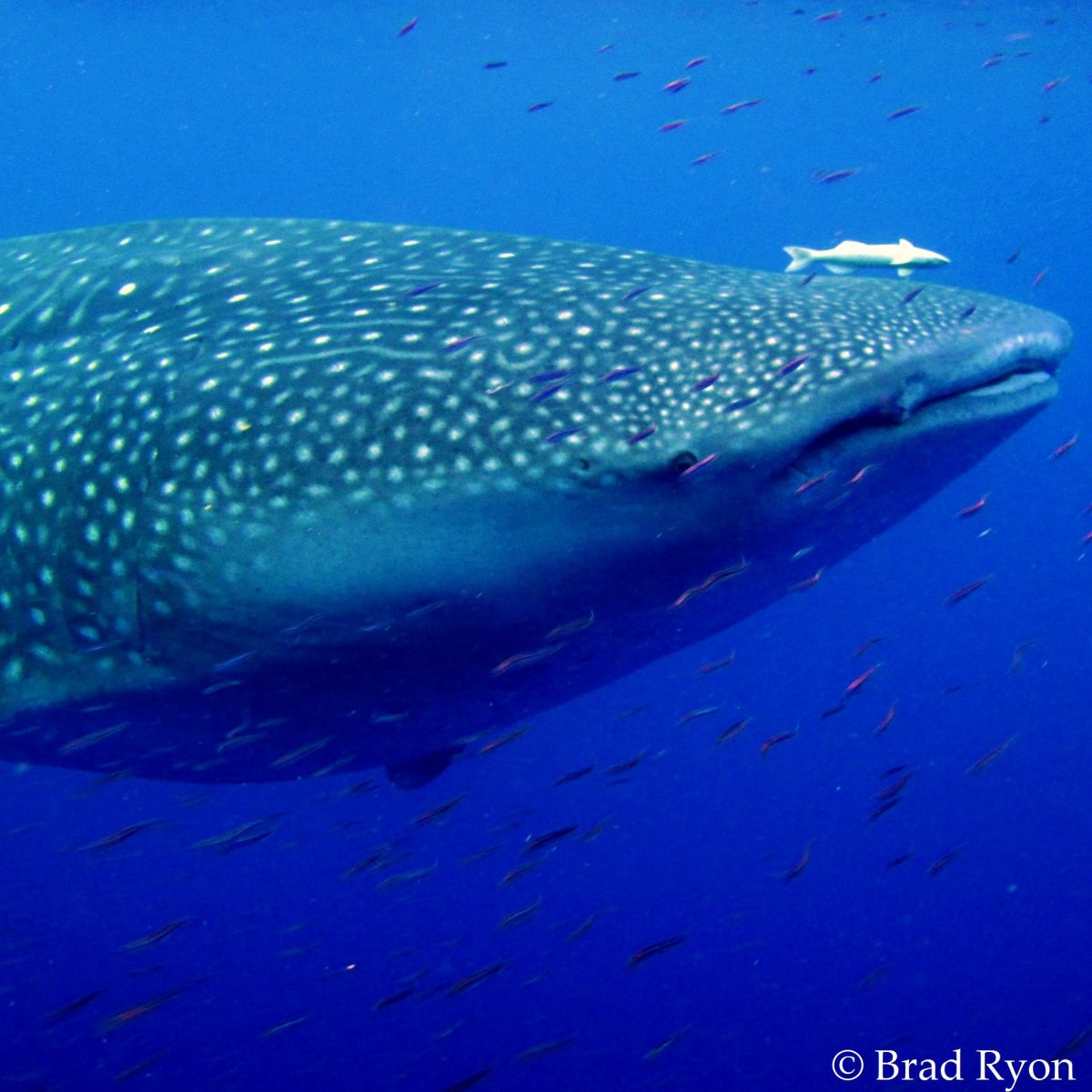
Research:
Very little is known about the whale shark despite being the largest fish in the sea, and Utila has been doing its best to find out more about them and their movements in this region through the efforts of WSORC and the Whale Shark Research Weeks at Deep Blue Resort in Utila.
Utila helped Honduras in 2009 to become the first country outside of Australia to use a specialized photo ID database for Whale Sharks, which was designed by Brad Norman, Jason Holmberg and Zaven Arzoumanian, this has now become the worldwide recognized database for Whale Sharks and is used in WildBooks for Whale Sharks a citizen science program which allows anyone to participate in the gathering of information through photographs and location logging of the whale shark(s) they encounter.
Currently (December 2016), there are over 9 countries participating in this initiative along with Honduras. The photograph database library holds over 50,000 photos and has received submissions from over 4,800 people and more than 100 researchers who have photographed whale sharks in 46 different countries.
These numbers become even more impressive when you compare them with the 2009 numbers which reported that there were over 18,000 photos of Whale Sharks collected, 6,800 Whale Shark reports, and over 1,600 data contributors and over 1,500 Whale Sharks tagged in the Database.
If you consider that until the mid-1980’s there were only approximately 350 official sightings of Whale Sharks in the world and Jacques Cousteau only ever saw 2 in his whole lifetime, the collection of data today and the rate with which it is being recorded is exceptional.
Utila also was instrumental in the first Ecocean encounter which verified sightings of the same Whale Shark in 3 countries: Honduras, Belize and Mexico in the same year and it is through the use of information like this that the movement patterns of the Whale Shark are slowly starting to be realized.
Dr. Rachel Graham of Marine Mega Net has carried out important research on Whale Sharks in the Caribbean including in Utila. She has introduced and placed an acoustic array of receivers from which it is expected to provide information about the movement of the Whale Shark along the Meso American Reef System.
Video:
One of the people that had video documented many Whale Sharks around the island of Utila is videographer Dan Cain. Mr. Cain has made a superb film called Big Fish Utila and the trailer can be seen at the youtube link here.
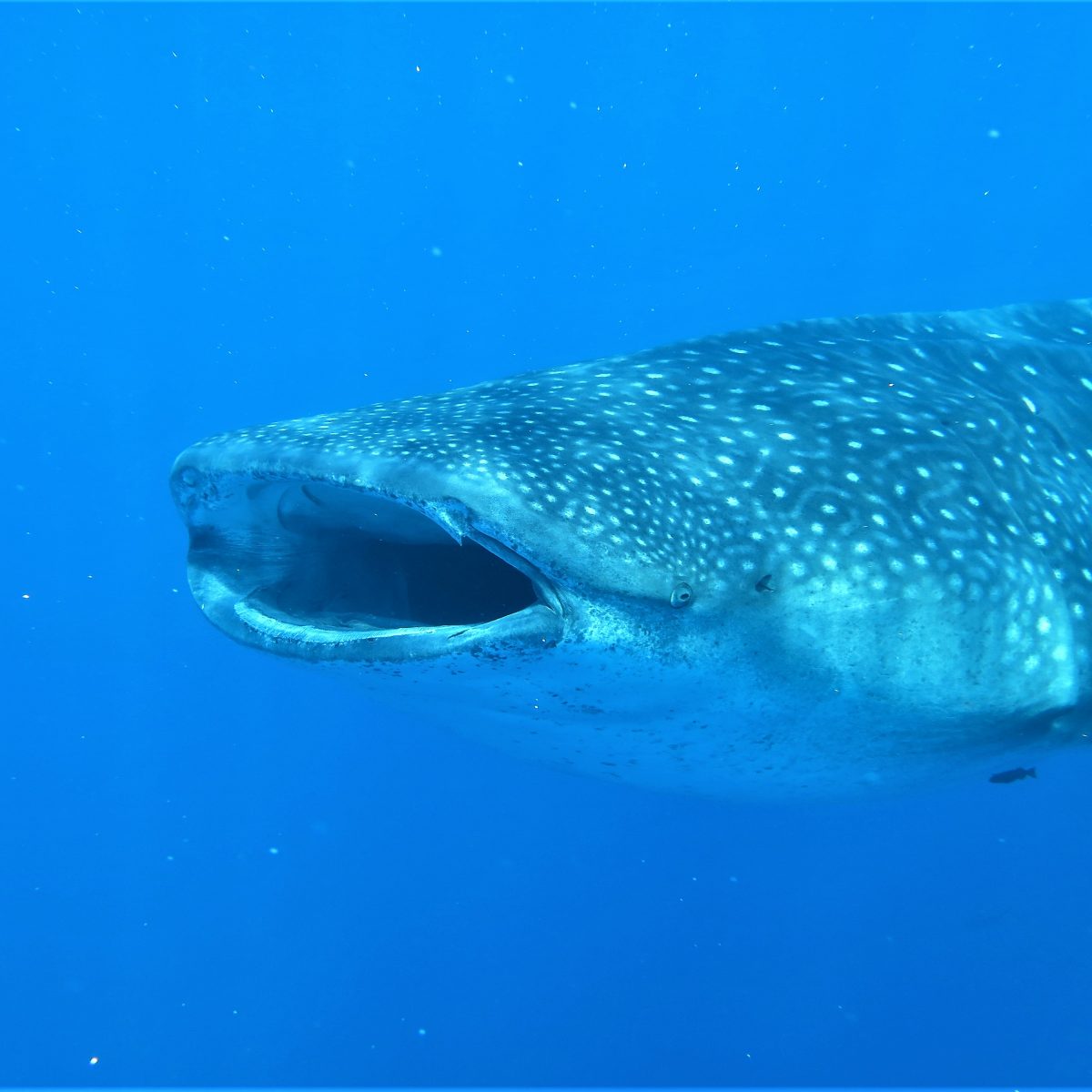
You’ll know when there are whale sharks around as the boats usually sound their horns when they return to the harbor after an encounter and the talk around the dive shops will be excitedly about whale sharks.
The boat captains of Utila look for the signs of a Whale Shark which entail birds circling close above the surface of the sea and swarming fish activity beneath them which is referred to a ‘boil’. A ‘boil’ looks like water churning and splashing over a fair sized area. As the boat gets closer to the ‘boil’ the fish (usually Blackfin Tuna), that are jumping and feeding become visible. Typically, a Whale Shark can be seen feeding in the boil. It is easier to spot Whale Sharks on calm days than choppy days- the Whale Sharks are still there on the choppy days, it’s just harder to see the signs of their presence on the top of the water!
Who to Contact:
To have a chance to see these magnificent creatures, and perhaps an opportunity for an “in-water” encounter, talk to one of the many dive shops. It is standard during dive trips to the North side of the island specifically, for Captains to plan time to look for Whale Sharks. If you want a more focused or private tour, you can also organize a Whale Shark expedition with one of the smaller boats and a private Captain.
Bush’s Bay Island Charters (out of Bush’s Supermarket in the center of town) and Sun Bliss Tours and Charters (out of the juice bar and snack shop at the lane-way to the cafe Mariposa/Mango Tango), both operate Whale Shark tours to give visitors the opportunity to have an up close encounter with Whale Sharks and Dolphins.
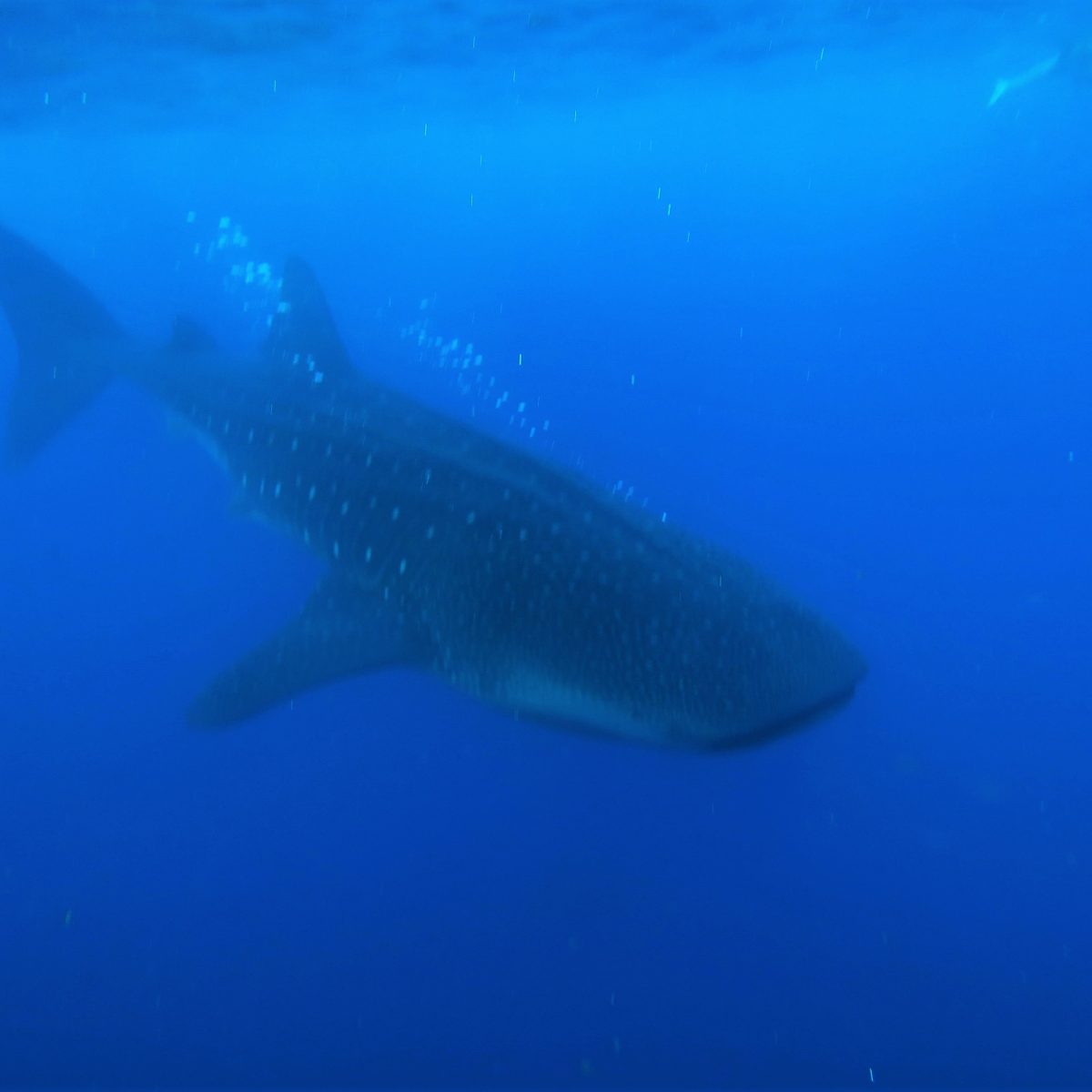
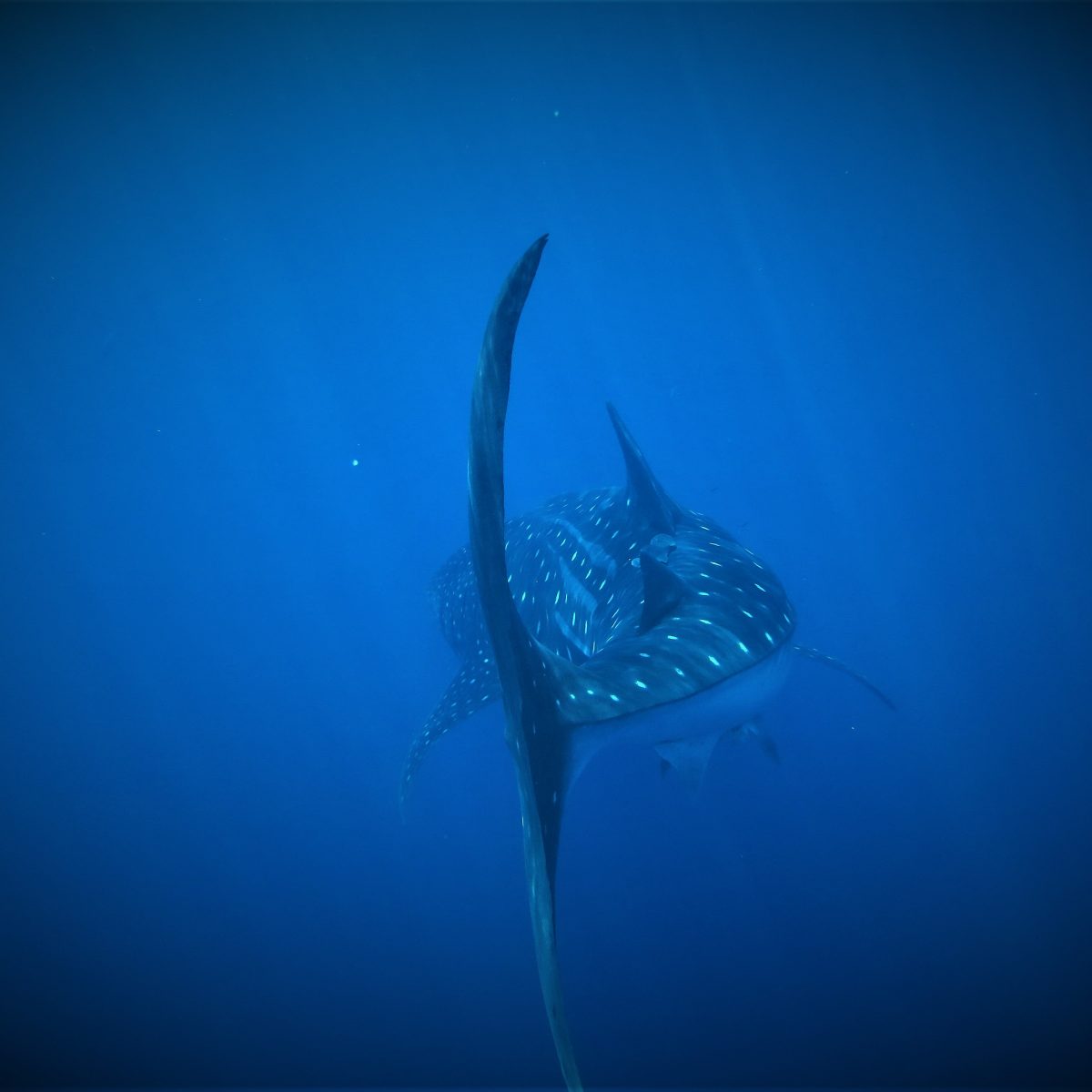
Why do whale sharks come to Utila?
We believe it is because of the topography of the island which pushes deep ocean currents up to the surface and because of fish and coral spawning. The best answer is it’s all about food.
I have heard the full moon is the best time to see them – is it true?
In a lot of place round the world yes this is true, but in Utila we have found that we see just as many whale sharks at other times as well, it does not seem to make a difference here.
When is the best time of the year to see Whale Sharks?
Utila is the only place in the world where you have a chance of seeing them all year round. That said, the main season is around of end of February, through March and April, and then again though in lesser amounts, around October, November and December.
In 2008 Utila became the only place in the world that has official records of seeing Whale Sharks in every month of the year!
What are the chances of seeing a Whale Shark if I come to Utila?
At certain times of the year there is slightly more chance than others but in 2008 we documented sightings in every month of the year and are the only place in the world that has this.
How big can Whale Sharks get?
There are official reports of up to 60ft many years ago but more commonly seen are between 18 and 32ft
Is the Whale Shark a Whale or a Shark?
It is a true shark; it is only called a Whale Shark because of its size
Are there rules for swimming with the Whale Sharks?
Yes, your boat captain should not disturb the Whale Sharks behavior; they should not drive their boat into the ‘boil’. There should be no more than 8 people at a time per boat in the water with a whale shark which does not including the guide. These are rules agreed to by all dive shops and should be followed by all dive shops.

Contact WSORC for more information on Whale Sharks in Utila or to get involved in a research or volunteer project.

